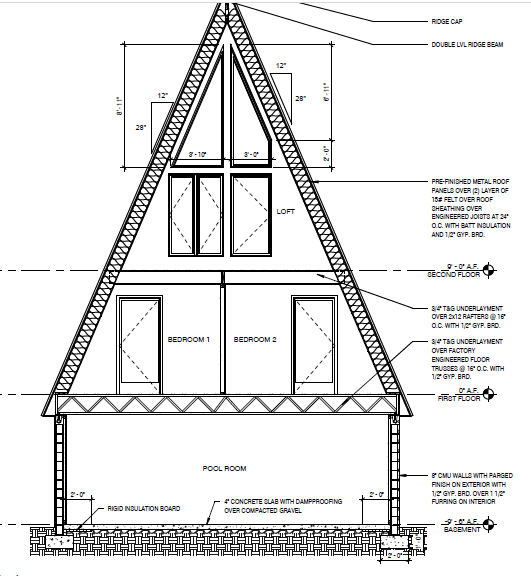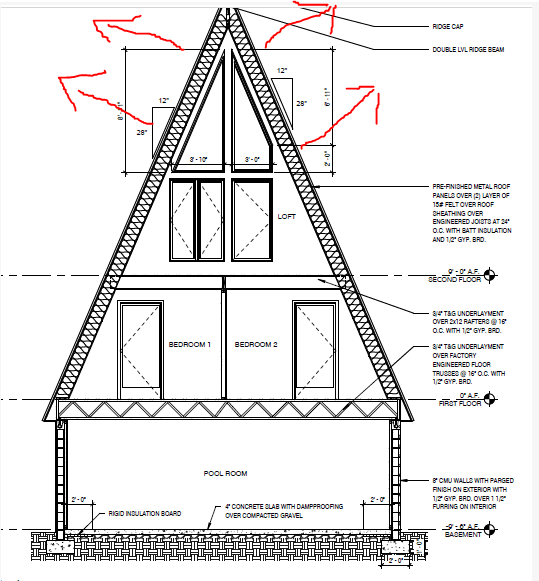Haven't done a lot with these. Just wanted to ask a few elementary questions to make sure I wasn't missing anything big. Do you typically have a ridge board as a nailer and just cut the I-Joists (I am assuming I joists rafters) as required or do you like to see straps/hangers?
I am assuming collar ties are not important and obviously I would not think you need an actual ridge beam due to the geometry of the roof. The rafters are basically columns, so I would check against bending due to wind load mostly.
See attachment for visual.
I am assuming collar ties are not important and obviously I would not think you need an actual ridge beam due to the geometry of the roof. The rafters are basically columns, so I would check against bending due to wind load mostly.
See attachment for visual.


